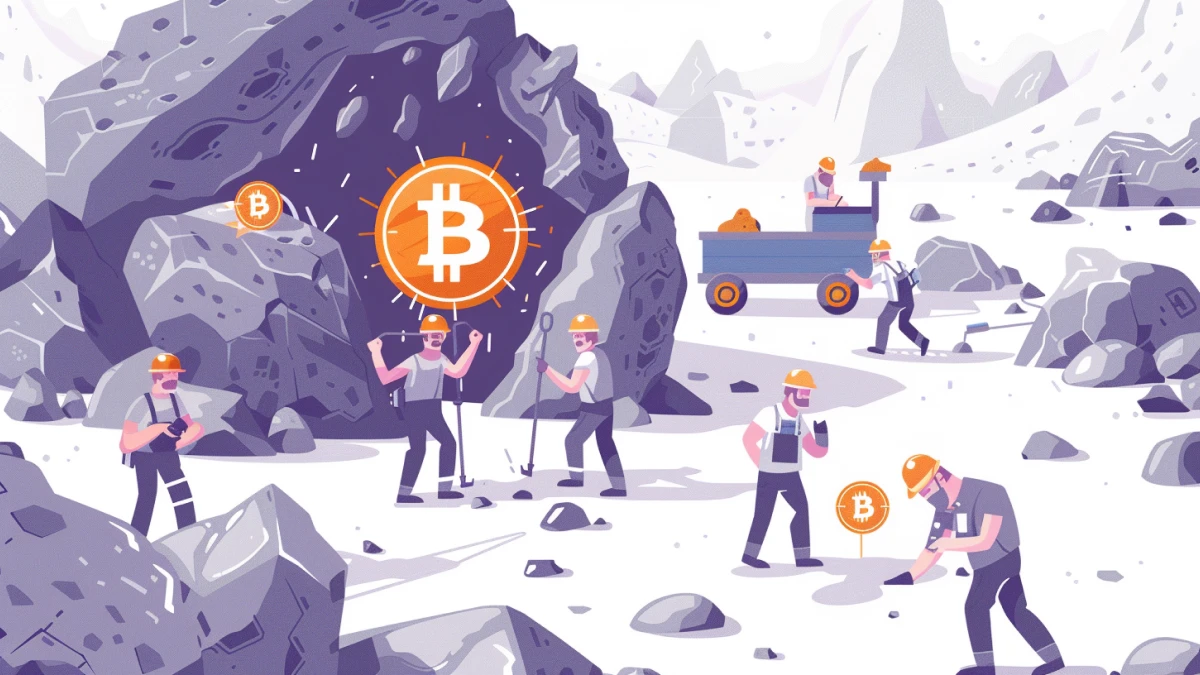What Is Proof-of-Work?
Proof-of-Work (PoW) is a mechanism Bitcoin uses to regulate the creation of blocks and the state of the blockchain. Proof-of-Work provides an objective way for all members of the Bitcoin network to agree on the state of the blockchain and all Bitcoin transactions.
Proof-of-Work forces miners to make trillions of numerical guesses in order to produce a valid block, and thanks to the difficulty adjustment, miners collectively find one block every 10 minutes on average.
➤ Learn more about Proof-of-Work.
Proof-of-Work’s Fairness
Proof-of-Work is random and fair due to the strong randomness of the SHA-256 hash function which underlies the Proof-of-Work mechanism. There are no complex governance algorithms controlling which miners find blocks or decide the rules. Bitcoin relies completely on cryptography (a field of math), economic principles, and game theory to ensure that all miners remain honest.
Incentives for Decentralization
Proof-of-Work also incentivizes miner operations to decentralize geographically and organizationally, decentralizing Bitcoin as a whole. This is due to the fact that miners’ most significant cost is a variable cost: electricity. Miners are constantly in pursuit of lower energy costs, and because cheap energy is distributed across the globe, mining operations are also distributed across the globe.
Proof-of-Work’s Security Is Scalable
Thanks to the difficulty adjustment, as Bitcoin rises in price, more miners start mining, driving the difficulty upwards and bolstering Bitcoin’s security. Thus, as Bitcoin becomes a more alluring target for attackers and a more threatening force to central banks, the Bitcoin’s security increases, discouraging any attempts to attack the network.
What Is Proof-of-Stake?
Proof-of-Stake (PoS) is an alternative consensus mechanism to Proof-of-Work, developed and used by a few alternative cryptocurrencies. In the Proof-of-Stake model, stakers—the PoS equivalent of miners—lock up funds in a special smart contract. Every time a new block is needed by the network, an algorithm grants a specific staker the opportunity to publish the next block. The algorithm selects the staker via lottery, depending on each staker’s percentage of total staked funds. For example, if a single staker controls 30% of all funds staked on a given network, they have a 30% chance of mining the next block.
Why Was Proof-of-Stake Invented?
Proof-of-Stake was invented to improve upon the perceived downsides Proof-of-Work. Firstly, Proof-of-Stake does not require the immense amount of energy consumption required by Proof-of-Work, because coins are simply locked in a specific smart contract on the blockchain. For this reason, individuals who criticize Bitcoin’s energy consumption prefer Proof-of-Stake.
Proof-of-Stake advocates also claim that PoS is more economically secure than PoW, however, this has been debated back and forth to no conclusion. Additionally, since Bitcoin has never been hacked and there are relatively few decentralized PoS systems, claims that PoS is more secure than PoW have remained purely theoretical and not based on any empirical evidence.
The Drawbacks of Proof-of-Work
Proof-of-Work has several drawbacks and costs. It also has some features which superficially seem like drawbacks but actually support the network and its incentive system.
Energy Consumption
Proof-of-Stake was invented to eliminate the massive energy costs of a Proof-of-Work network. Many Bitcoin critics have cited its energy consumption as a downside to Bitcoin, and advocates of alternative cryptocurrencies have claimed their token will replace Bitcoin due to this fact.
Both groups overlook or under-appreciate the value of Bitcoin’s ultimate security. No cryptocurrency, fiat currency, or even commodity-based money can match the security and immutability of Bitcoin’s blockchain. For high-value transactions, security and reliability are often more important than speed. Thus, Bitcoin’s energy consumption is well worth the cost, as indicated by the strong demand to transact on the Bitcoin blockchain. No cryptocurrency which has attempted to replicate Bitcoin and eliminate its energy requirements has established sufficient security and decentralization, precisely because Proof-of-Work converts energy into security.
➤ Learn more about the environmental impact of Bitcoin.
Hardware Requirements
Satisfying the Proof-of-Work requirement necessitates physical computers and intensive computation. To maximize the energy efficiency of this process, miners use specialized hardware rather than normal laptops and general purpose computers. These specialized computers are called ASICs, and they are not capable of anything other than Bitcoin mining.
The fact that this hardware has only one use protects Bitcoin by discouraging attackers. If an attacker wanted to execute a 51% attack on the network, they would have to purchase millions if not billions of dollars worth of ASICs, only to render them useless by destroying the Bitcoin network.
The Drawbacks of Proof-of-Stake
Proof-of-Stake aims to eliminate the downsides of Proof-of-Work, including the hardware requirement and the energy consumption. However, by dropping these features, Proof-of-Stake also loses Proof-of-Work’s benefits.
Governance Problems
Proof-of-Stake systems grant control of the network to owners of the token. Those with large amounts of the token can influence the rules of the network. They are also able to accumulate more of the token simply by staking. This positive feedback loop can lead to centralization of staked funds in the hands of exchanges and large institutions who custody user funds.
This is not the case for Proof-of-Work systems. Bitcoin’s ruleset is controlled by nodes and miners, and no power over the network is given to bitcoin owners.
Vulnerability to Attack
Proof-of-Stake systems are vulnerable to centralization and capture because control of the network is determined solely by capital, which is far more centralized than labor and cheap energy. In a PoS network worth $100 billion where 10% of tokens are staked, the $100 billion network can be taken over by any party able to allocate $10 billion. All the attacker would have to do is send $10 billion in tokens to a staking contract.
In a Proof-of-Work network, capital, labor, and efficient allocation of both are required to execute an attack on the network. Attacking a network with $10 billion of security would require purchasing ASICs, acquiring space and energy contracts to mine at a larger scale than the entire network, and acquiring and deploying the labor to execute the attack. If such an attack were underway, the entire network would likely be made aware ahead of time by the immense demand for ASICs and electricity.
Key Takeaways
- Proof-of-Work (PoW) is a mechanism Bitcoin uses to regulate the creation of blocks and the state of the blockchain.
- Proof-of-Stake (PoS) is an alternative consensus mechanism which delegates control of the network to owners of the token.
- Proof-of-Stake is presented as an improvement over Proof-of-Work because it does not require hardware or energy consumption.
- Proof-of-Stake has a stronger tendency to centralize and concentrate token ownership to large holders. Its security guarantees are therefore weaker than Proof-of-Work.


